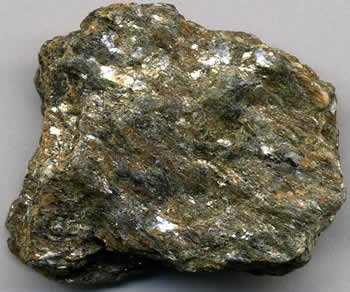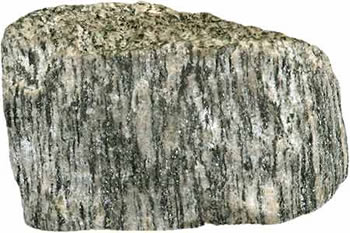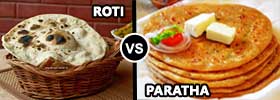Difference between Schist and Gneiss
Key Difference: Schist and Gneiss are two different types of rocks that look remarkably like. The schist is type of medium-grade metamorphic rock that contains flat, sheet like grains in a pattern. Gneiss, on the other hand, is formed in the pattern of layers of sheet-like planar structures.
 Schist and Gneiss are two different types of rocks that look remarkably like. The reason for this is because they are both types of metamorphic rock. Metamorphic rock is rock that has formed from the transformation of existing rock types. These rocks change over time through various processes of heating and cooling. In addition to Schist and Gneiss, some other examples of metamorphic rock include slate, marble, and quartzite.
Schist and Gneiss are two different types of rocks that look remarkably like. The reason for this is because they are both types of metamorphic rock. Metamorphic rock is rock that has formed from the transformation of existing rock types. These rocks change over time through various processes of heating and cooling. In addition to Schist and Gneiss, some other examples of metamorphic rock include slate, marble, and quartzite.
The problem with differentiating between schist and gneiss is that they might look quite similar, especially to someone who is not well-versed in geology. The schist is type of medium-grade metamorphic rock that contains flat, sheet like grains in a pattern. Gneiss, on the other hand, is formed in the pattern of layers of sheet-like planar structures. These layers often alternate in light and dark patterns.
 Due to the presence of mineral grains in the schist, the schist is known for its characteristic flaky appearance, which often looks like flecks embedded in the stone. Hence, the schist is often used in decoration rather than in core construction like other forms of stone. Another reason that the schist is not commonly used for construction is because of its tendency to split, from which the stone actually gets its name. The stone is easier to split in the direction of the grain.
Due to the presence of mineral grains in the schist, the schist is known for its characteristic flaky appearance, which often looks like flecks embedded in the stone. Hence, the schist is often used in decoration rather than in core construction like other forms of stone. Another reason that the schist is not commonly used for construction is because of its tendency to split, from which the stone actually gets its name. The stone is easier to split in the direction of the grain.
The gneiss, which is the most commonly type of rock, is known for its layers. The Gneiss is formed through various processes of heating and cooling, which leads to sheet or layers being formed. Often, these layers alternate in light and dark layers. These alternating light and dark layers are one of the most defining characteristics of the gneiss.
Comparison between Schist and Gneiss:
|
|
Schist |
Gneiss |
|
Description |
A medium-grade metamorphic rock with medium to large, flat, sheet-like grains in a preferred orientation. |
A common distributed type of rock formed in the pattern of layers of sheet-like planar structures. |
|
Type |
Type of metamorphic rock |
Type of metamorphic rock |
|
Created from |
Forms from clays and muds |
Forms from volcanic rock, shale, or granitic. |
|
Forms |
Forms on a continental side of a convergent plate boundary where sedimentary rocks, such as shales and mudstones, have been subjected to compressive forces, heat, and chemical activity. |
Forms by regional metamorphism at convergent plate boundaries which allows the mineral grains recrystallized under intense heat and pressure. |
|
Characteristics |
Contains flakes of mica, which tend to sparkle. Can be easily split. |
Alternating light and dark bands of minerals |
|
Etymology |
The word schist is derived ultimately from the Greek word σχίζειν schízein meaning "to split." |
The word gneiss comes from the Middle High German verb gneist (to spark; so called because the rock glitters). |
|
Main mineral content |
|
|
|
Types |
Mica Schists, Calc-Silicate Schists, Graphite Schists, Blueschists, Whiteschists, Greenschists, Hornblende Schist, Talc Schist, Chlorite Schist, Garnet Schist, Glaucophane schist. |
Augen gneiss, Henderson gneiss, Lewisian gneiss, and Archean and Proterozoic gneiss |
|
Texture |
Foliated, Platy |
Banded, Foliated, Platy |
|
Colors |
Black, Blue, Brown, Dark Brown, Green, Grey, Silver |
Black, Brown, Pink, Red, White |
|
Uses |
As Garden Decoration, Paving Stone, Decorative Aggregates, Floor Tiles, Interior Decoration |
As Building Stone, As Facing Stone, Garden Decoration, Paving Stone, Countertops, Decorative Aggregates, Flooring, Interior Decoration |
Reference: Wikipedia (Metamorphic Rock, Schist and Gneiss), Geology.com (Schist and Gneiss), Compare Rocks Image Courtesy: jsjgeology.net, flexiblelearning.auckland.ac.nz









Add new comment